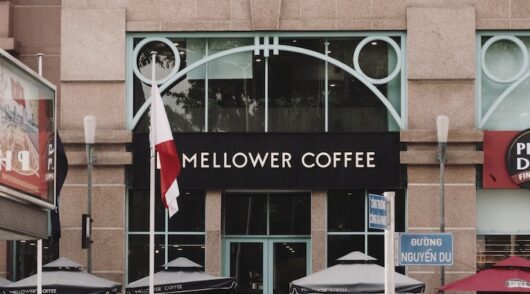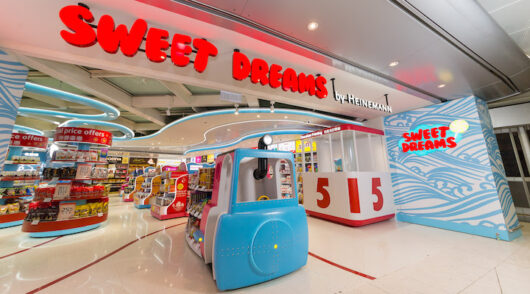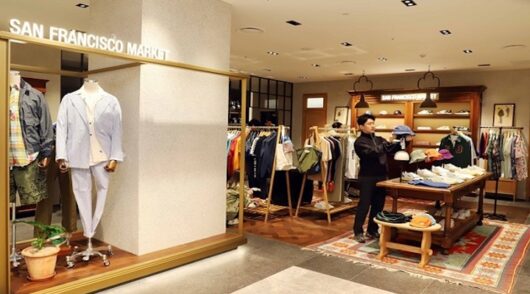Digital menu boards have emerged as a tool retailers can deploy to significantly boost incremental sales – and even deliver personalised customer experiences.
The accelerating trend for retailers – especially quick-service restaurants (QSRs) – to replace static analogue menus with digitally connected screens displaying animated graphics is driving topline sales growth by as much as 17 per cent according to an expert in the field, Bangkok-based Sebastian Svensson, who is CEO of Giant Pumpkin.
But the ultimate benefit is being experienced by retailers taking the concept a step further – integrating AI behind the scenes to predict what sort of offers consumers are most likely to order and to display promotions or upsizing based on previous customer behaviour.
“Retailers who adopt this technology can change the dynamics of customer experience and purchasing behaviour,” Svensson tells Inside Retail.
Giant Pumpkin, a pioneer in this field, is the first full-service agency in Southeast Asia with expertise in out-of-home technology, retail music and digital signage solutions. The company has expanded over the past five years to cover Singapore, Thailand, Malaysia, Indonesia, and the Philippines – with other markets, like Vietnam, on the radar. It now oversees more than 2000 digital menu boards across the region.
Svensson likens the progression of menu boards as similar to what happened in online advertising – from the early days when advertisers bought a bulk audience on websites – “they were buying eyeballs” – to progressively more and more niche and targeted audiences as technology enabled it to identify prospective customers.
A three-step process
“Typically we work with customers in three steps to get them to the dynamic or the AI level. The first part, the most fundamental change, is taking them from analogue to digital. You have to start thinking in terms of a digital canvas where you can control the narrative a little bit more – like when people look at a menu board, you can animate things.”
Step two, he explains, is where the dynamic aspect comes into play. For example, if something goes out of stock, the menu boards are integrated with the store’s POS system so it can automatically change the menu composition in real-time – without any human intervention – eliminating a major pain point in customer service and engagement when they try to order something they can see on a menu but is unavailable.
“All of a sudden staff who are there to cook and sell food no longer need to think about those operational steps.”
There is also a significant opportunity to be had from controlling the narrative on the menu boards – something not possible with traditional analogue solutions. One fast-food business, for example, wanted to encourage customers to upsize their beverage choices. With digital menu boards, you can use animations to drive viewers to specific areas of the menu and increase the upsell on selected items.
The creative element is often overlooked at the start, but it is a very important part, he explains. You can have the technology, the hardware, and the software but if the creative is not embedded in a seamless, the whole system will underperform.
He says some companies just want to copy what is on their analogue menu board onto a digital menu board – a strategy that won’t work.
“Sometimes we struggle to explain to them that the creative is 90 per cent of the execution. Nothing will happen if you put just a static image on a digital screen – because there is no difference. So getting them to adopt the creative change – which in many cases is new to them – is challenging because change can sometimes be scary.”
However, the strategy is proven to work. Giant Pumpkin’s international partner Visual Art helped with McDonald’s transition from analogue to digital menu boards across 10 markets in one example. “The first thing we did was separate the breakfast menu from the lunch menu, and added weekend specials, helping them be dynamic with their offering. That resulted in sales increasing by 5 to 10 per cent for specific items just by using more targeted menus.
“Sometimes, we might just try to upsell things the customer doesn’t know they want. In QSR, typically 70 per cent of customers who pass the drive-thru or go to a counter, they have in mind already what they want. So we try to sell them items they don’t know they want, such as a coffee or a side – something that creates an incremental sale for the retailer.”
How AI can personalise displays
The final step is where AI comes into play. “That’s the really interesting part because you can go one-to-one with a consumer,” says Svensson.
“We’ve done tests with a drive-thru, for example, where we can dynamically change the menu board composition depending on the type of car driving up, how many people are in the car – like is it a family or a couple, for example – and the AI model learns from the sales data in the background. So you can show a one-to-one menu composition and increase your sales based on that.”
Leading retailers to this final step can be a challenge, especially if management is still coming to terms with converting static analogue menu boards into digital displays.
“In Southeast Asia we are in the early days, mostly working towards digitising the customer and getting them just to think about basic things like how they can increase their sales based on taking menu boards from analogue to digital and deploying dynamic solutions.”
But the technology is there, it works well and it is easily implemented using cameras and data from the store’s back end, he says.
Giant Pumpkin equips its system with AI technology in the background, collecting sales data from the stores, integrating directly into the retailer’s POS system, and taking further data from the drive-thru’s camera network.
“It is a simple setup. These two metrics feed into the AI model which learns constantly – and there is no human intervention behind the scenes,” explains Svensson.
You can learn more about the journey from analogue menu boards to digital solutions here.






